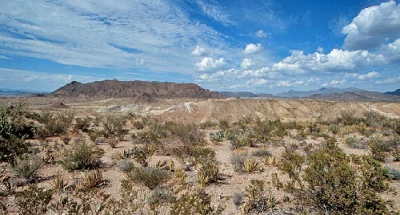
The Chihuahuan Desert is the largest hot desert in North America, located in the Southwestern United States and Northern Mexico. Its total area is 140,000 sq mi (360,000 km2).
Though the Chihuahuan Desert is the southernmost, it lies at a fairly high elevation and is not protected by any barrier from arctic air masses, so hard winter freezes are common. Its vegetation consists of many species of low shrubs, leaf succulents, and small cacti. Trees are rare. Rainfall is predominantly in the summer, but in the northern end there is occasionally enough winter rain to support massive blooms of spring annuals. The Chihuahuan Desert is unexpectedly rich in species despite the winter cold.
The eastern boundary of the Chihuahuan Desert is one of the oldest and richest centers of plant evolution on the North American continent. A wide variety of vegetation communities are present in the in the ecoregion, ranging from desert shrublands at lower elevations and conifer woodlands at the highest elevations. The Chihuahuan Desert boasts as many as 3,500 plant species, including nearly a quarter of the world’s cactus species. Approximately 1,000 of the plant species grow only in this ecoregion. Some distinctive habitat types in the Chihuahuan Desert include yucca woodlands, playas, gypsum dunes, and a diverse array of freshwater habitats. Vast desert grasslands and a wide variety of yuccas and agaves, including many endemic species, also make this desert extremely unique.
The Chihuahuan Desert is home to more than 170 species of amphibians and reptiles. At least 18 of these species are endemic to the Ecoregion. There are a surprisingly large number of endemic fish that occur in the Chihuahuan Desert as well—nearly half of the 110 fish species in the region are either endemic or of limited distribution. Most are relic species found in isolated springs in the closed basins.
Picture Credit : Google

